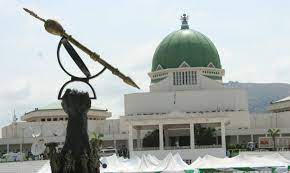
The 1976 Local Government Reform in Nigeria represented a significant milestone in the country’s administrative and political history.
What are the characteristics of the 1976 local government reform in Nigeria? The 1976 local government reform was one of the major achievements of the military in Nigeria. This reform was made during the Obasanjo regime in order to unify all the local government systems that was practiced throughout the nation. Apparently, before the 1976 local government reform in Nigeria, this country operated multiple local government councils based on the British, French and American models.
The North was practicing a system known as the native authority system so as to preserve the authority of the northern traditional rulers. The system consisted of a chief with a council either “Chief and Council” of “Chief-in-Council“.
A more complex nature local government councils was manifest in Southern Nigeria. There were as many as five different kinds of Local Government Councils in each of the southern regions of Nigeria. These local government councils were not subordinate to each other and the instrument that created them specified their functions and powers and the areas of their jurisdiction.
The structure of these southern Nigeria local government councils was structured in a way that the territory of Lagos had one tier system, Eastern Region had two tier system while western and mid Western Regions had three tier system.
These were the major reasons why the Obasanjo regime had to unify local government systems in Nigeria. His administration also made local government the third tier of government in Nigeria, and a specific mode of creating local governments in the country was specified.
Features of the 1976 local government reform in Nigeria
1. The 1976 local government reform unified local government systems that were practiced in the country in terms of function, structure, financing, etc.
2. The reform provided a criteria which must be met before the creation of any local government in the country. Thus, except a state has a population that ranges between 100,000 and 800,000, it can not become a local government on its own.
3. The reason made local government the third tier of the government. This tier was independent from the central and state government.
READ Thirteen Key Responsibilities of Local Government
4. All the local government were made single-tier local government instead of multiple system.
5. The chairman and supervisory councillors were made full time employees of local governments.
6. The reform paid off all the debt of local governments in Nigeria.
7. Special grants were made available to the new local governments to enable them build and establish their secretariats.
8. All state government were mandated to set up local Government Service Boards aimed at improving the quality of personnel of local governments.
9. Local government authorities were assigned more responsibilities as an agency for promotion of development at local level.
10. With the aim of insulating local governments from partisan politics, the 1976 local government reform made it possible for councilors to be elected on individual merits instead of on party tickets.
11. Both federal and state governments were mandated to give matching grants and loans to the new local governments.
12. The 1976 local government reform also harmonised the conditions of service of local government personnel with the personnel of the state and federal governments.
13. In order for the local government to carry out their functions effectively, a greater measure of independence were granted to them. But it was not absolute because the local government depended on other tiers of the government.
14. Finally the reform tried to demarcate traditional rulers from participating in partisan politics. The reason for this is because, traditional ruler play a crucial role in the society. Their involvement in partisan politics will definitely make them partial.
Based on research, above are some of the significant features of the 1979 local government reform in Nigeria. Throughout the history of Nigeria, this reform is one of the major developments that was made to bring government closer to the people and to unify the nation through a single structure local government system.
ALSO READ:
Varieties of Electoral Systems: Their Pros and Cons
Top Online Information Systems Degree Programs and Industry Salary 2023/2024
Leave a Reply